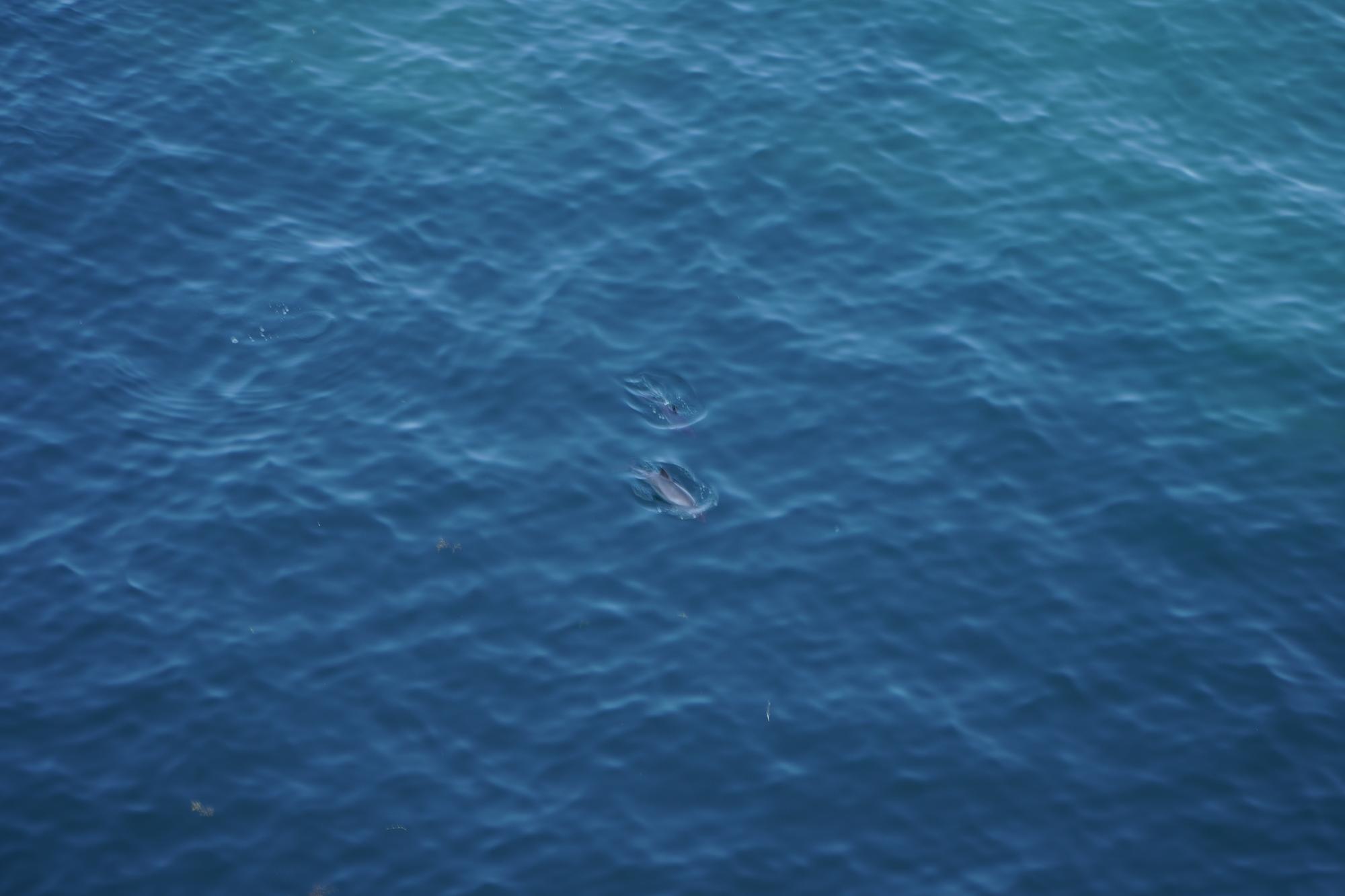Species and nature conservation begins with construction
Environmental protection and nature conservation
The top priority during the construction and operation of offshore wind farms is the protection of flora and fauna as well as the minimisation of any emissions, especially noise and light emissions, into the environment. Numerous guidelines and laws on environmental protection and species conservation must be observed when using offshore wind energy. Compliance with these requirements is a prerequisite for the granting of permits and the construction and operation of offshore wind farms.
Nature conservation and offshore wind farms, a contradiction?
Approval is only granted if the expert biological reports do not indicate that the wind turbines will have any negative impact on protected assets. This elementary requirement is consistently confirmed by the investigations accompanying operation, which is very important in relation to the authorities and the BfN (Federal Agency for Nature Conservation). It is not primarily a question of whether the quantity of species and individuals increases, but rather that the operation of a wind farm with all its impacts does not impair the development of individuals compared to the reference area, which is confirmed several times in the expert reports. If this is not the case, The Federal Maritime and Hydrographic Agency (BSH) might be forced to demand further investigations and, if necessary, to take measures.
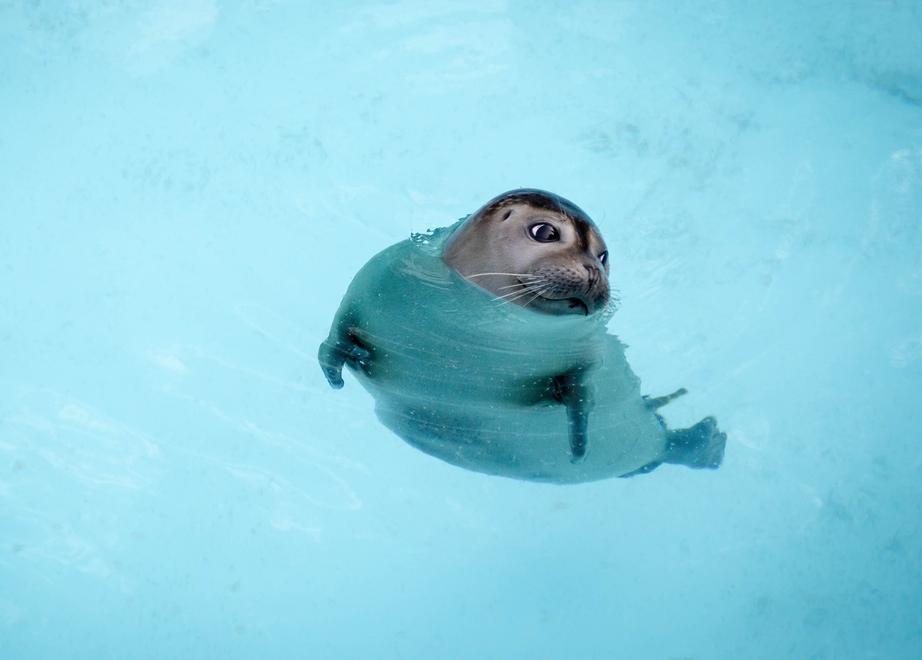
Preliminary investigations
Environmental impact assessment and subsequent environmental monitoring play the central role in assessing the impact of technical installations at sea on the scale of offshore wind farms, which can extend over 50 or more square kilometers. The scope of investigations includes all living organisms in the soil, water and air. As early as two years before the start of construction and at least five years after the start of operation, the existing species diversity, their distribution and their population density are recorded in extensive biological counts by ship and aircraft. This includes soil and water samples, which are examined for microorganisms (benthos), as well as the determination of fish and bird populations and, last but not least, marine mammals. The best known representatives are the protected porpoises and seals.
In the years concerned, wind farm areas and unpolluted reference areas are investigated and compared at the same time. Based on this extensive database, populations of the protected species benthos, fish, birds and mammals are recorded and compared over a period of years. Fluctuations in the populations of some species are not unusual and are due to their migratory behaviour. Individual, highly endangered species are also recorded as a matter of course. However, reliable statements on their long-term development can only be made over a longer period of time.
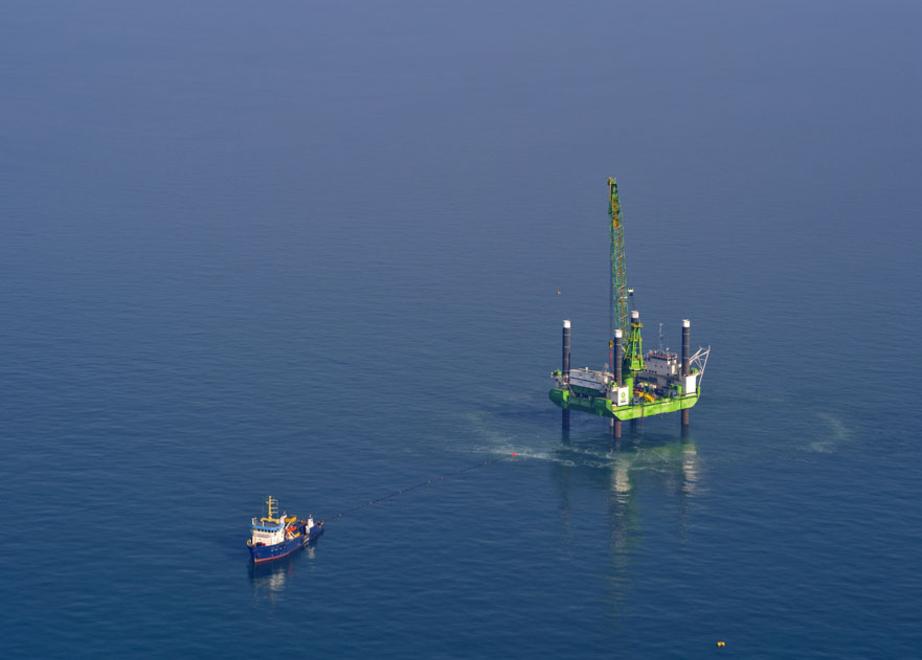
Operational investigations
During the operation of a wind farm, extensive biological studies are carried out over a period of years, not only to monitor the development of the populations before construction begins, but also to document, for example, the influence of the foundation structures on the development of new biotic communities. Many species change their range during the course of the year or are only temporarily present in the North Sea. The results are therefore now evaluated not only at wind farm level, but integrated across the entire wind farms in the North Sea and provide important insights into understanding the behaviour and symbiosis between technology and nature.
Biodiversity in Offshore Wind Farms
The fishing ban within the wind farm boundaries alone allows stocks of North Sea-typical marine fish such as herring, mackerel, cod and plaice, as well as shrimp, crabs and bottom-dwelling creatures to recover under the protection of the rockfills and steel structures. Many species of crabs, mussels, snails and all kinds of small creatures colonise the tripod structures at different water depths and use them as artificial reefs. New communities of life are formed. Biological succession is a slow and steady process that is studied over the long term. New species migrate or are introduced by shipping, such as the Pacific oyster, and find favourable living conditions in the North Sea.
The population of all bird species living year-round in the North Sea can be considered stable or increasing. In particular, recent studies on loons, which are considered a particularly shy species, give reason to sound the all-clear. Loons do show greater distances to construction sites during construction activities, but these distances return to normal during operation.
Migratory birds are a special feature, migrating in large flocks along the coast and sometimes directly over the North Sea and offshore wind farms in spring and autumn. Studies on land show that due to habituation effects, the species are able to visit their ancestral resting places as well as avoid the turbines.
For porpoises and seals, the Trianel Wind Farm Borkum is a popular refuge, especially in spring during the rearing of young whales, not least because of the high food supply.
Initial fears that offshore wind farms would have a negative impact on marine biology have not been confirmed. On the contrary, offshore wind farms have become a refuge for threatened and depleted marine life in particular. Thus, Trianel Wind Farm Borkum not only contributes to climate protection, but also actively contributes to species conservation.
Large bubble curtain – new standards in noise mitigation
When wind farms are built in water depths of 20 to 40 m, as is the case in the German North Sea, pile driving is necessary for the foundations which are used to anchor the wind turbines to the seabed. This work generates considerable underwater noise emissions that can harm marine mammals, especially porpoises. Here, the “large bubble curtain” co-developed by Trianel as a noise mitigation method has for the first time proven its suitability for compliance with the noise limits, as well as safe and durable handling – even in standard use.
Together with the company Hydrotechnik Lübeck, Trianel has further developed the technology for the special requirements in the construction of tripod foundations, as well as monopiles. Today, the large bubble curtain is state of the art and is used in the construction of almost all offshore wind farms founded on piles, also beyond the borders of Germany.
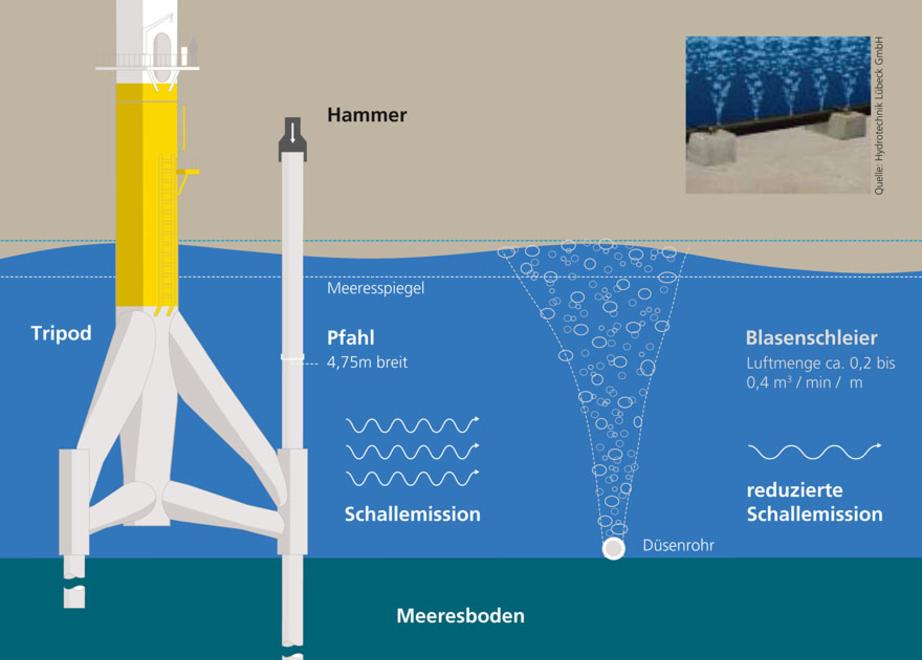
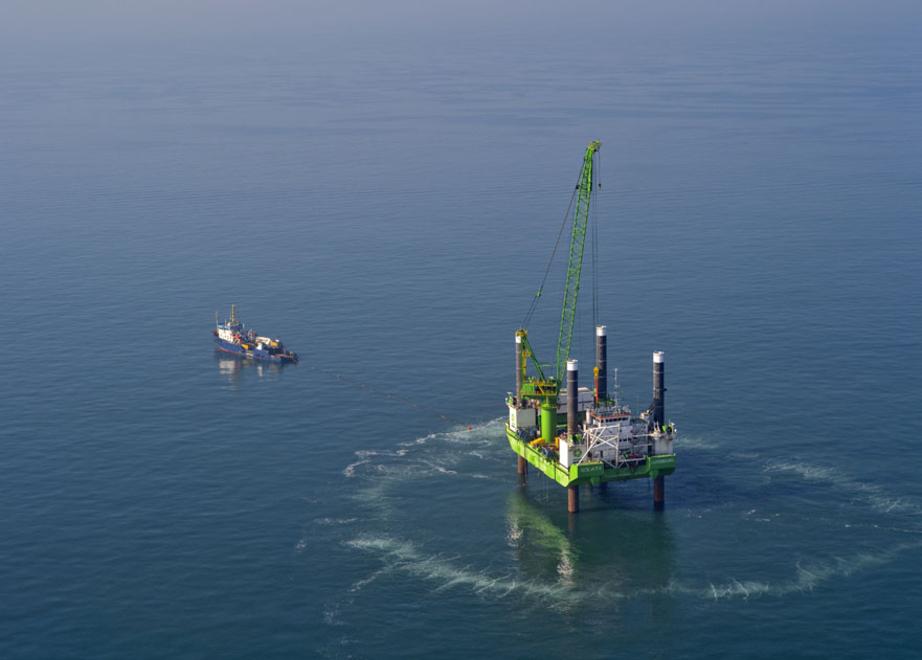
Functionality
In the large bubble curtain, a vessel places a large, perforated hose in a circle around each foundation. The hose is then filled with compressed air, causing air bubbles to rise and create an annular bubble wall. During pile driving, the noise source is thus completely enveloped, reducing noise propagation. This simple principle has been so successful that it is now used in almost all offshore pile-driving projects currently under construction.

